
Planning & Logistics
How to Start Planning a Home Renovation
04.28.2025
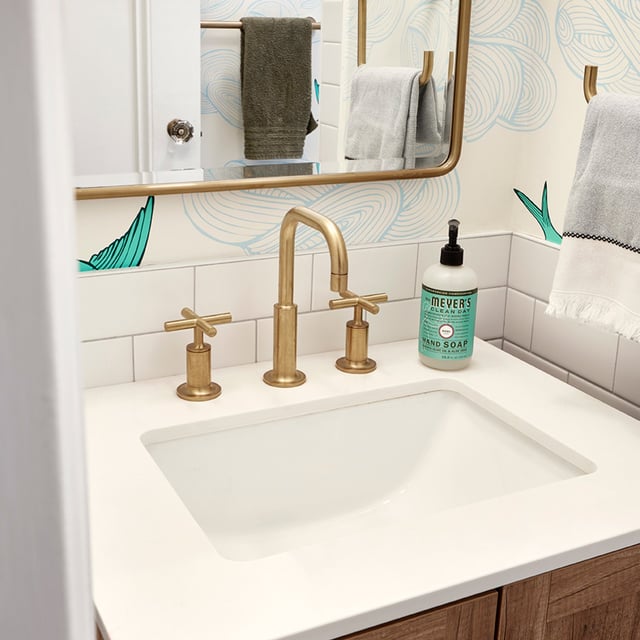
In This Article
So, you're thinking about remodeling your bathroom. Maybe your tiles are straight out of a '90s sitcom, or perhaps your shower pressure is so weak it feels like being drizzled on by a leaky faucet. Whatever the reason, you're ready for an upgrade. But before you start picking out fancy rainfall showerheads and debating between matte black or brass fixtures, let's talk about the part no one likes: the price tag.
Bathroom remodel costs can range anywhere from a few thousand bucks for a basic refresh to a small fortune for a luxury overhaul that would make a five-star hotel jealous. The difference? It all depends on factors like materials, labor, plumbing, and whether or not you're planning to knock down walls (spoiler: that's not cheap).
Understanding these cost factors before you dive in is crucial. Otherwise, you might find yourself halfway through demolition with a maxed-out budget and no working toilet. Not ideal. So, let's break it all down—what drives the cost, where you can save, and how to avoid common budget pitfalls. Because the only surprise you want in your new bathroom is a heated floor, not an unexpected bill.
When it comes to remodeling, size isn't just a number—it's a major cost factor. A tiny half-bath is a much different (and cheaper) project than a sprawling primary bathroom with a double vanity, separate tub, and enough space to host a yoga class. The bigger the bathroom, the more materials, labor, and time it takes to get the job done.
First, let's talk materials. More square footage means more tile, paint, and flooring—more of everything. That subway tile you love might be affordable for a small powder room, but if you're covering an entire spa-like bathroom, the cost can add up quickly.
Then there's labor. A compact bathroom might only need one or two workers at a time, but a larger space often involves a full crew—plumbers, electricians, tilers, and maybe even a general contractor to keep everyone in line. More people mean higher labor costs.
So, what does this all mean in dollars? A small bathroom remodel can cost anywhere from $5,000 to $15,000, while a mid-size bathroom might range from $15,000 to $35,000. Large, luxury bathrooms? They can easily hit $50,000 or more, especially if you start adding high-end features like heated floors, custom cabinetry, or a shower the size of a New York studio apartment.
The key takeaway? Know your bathroom's size and budget accordingly—because that dream of an oversized soaking tub might shrink once you see the price tag.
Not all bathroom remodels are created equal. There's a big difference between swapping out a dated faucet and gutting the entire space down to the studs. The scope of your remodel will be one of the biggest factors in determining your budget—and how much stress you're about to endure.
A cosmetic update is the easiest and most affordable route. Think fresh paint, new fixtures, updated lighting, and maybe even a stylish vanity swap. These minor upgrades can make a bathroom feel brand new without the headache (or price tag) of major construction. If you're happy with the layout and plumbing but just want to ditch the '90s-era seashell sink, a cosmetic remodel is the way to go.
On the other hand, a full remodel is a different beast. This means ripping out tile, replacing plumbing, updating wiring, and possibly reconfiguring the entire space. Want to move the toilet to the other side of the room? That's a gut renovation, and it's going to cost you.
Thinking even bigger? Expanding the layout or making structural changes—like knocking down a wall to steal space from a nearby closet—will send costs soaring. Not only are you paying for demolition and reconstruction, but you might also need permits, inspections, and even an architect.
Moral of the story? The more you change, the more you spend. So, before you start dreaming of a walk-in shower the size of your living room, make sure your budget (and patience) can handle it.
When it comes to bathroom remodeling, your material choices can make or break your budget. You can go practical and wallet-friendly or splurge on the kind of luxury finishes that make your bathroom feel like a five-star hotel. Either way, knowing the difference between budget and high-end materials will help you prioritize what's worth the upgrade—and what you can live without.
Your bathroom floor takes a beating—water, humidity, and the occasional shampoo bottle drop. Vinyl flooring is the budget MVP, offering water resistance, durability, and easy installation for as little as $2 per square foot. Ceramic and porcelain tiles are the middle ground, providing more style and longevity while keeping costs manageable. But if you want to go all out, marble or natural stone gives that "luxury spa" vibe—just be ready to pay top dollar (and accept that it requires regular sealing to stay pristine).
A basic toilet will do the job just fine, but if you've ever dreamed of a heated seat or a bidet with 12 different spray settings, high-end fixtures can get… interesting. Faucets, bathtubs, and showerheads also range from standard, functional designs to sleek, touchless, waterfall-style masterpieces that can turn your shower into a personal rainforest. Just remember: the fancier the fixture, the pricier the install.
Laminate countertops are a budget-friendly option, but they don't exactly scream "luxury." Quartz and granite are solid choices for durability and aesthetics, while marble adds an upscale touch (and a higher price tag). Want something unique? Custom concrete or recycled glass countertops bring personality, though they also require extra maintenance.
Stock cabinets from big-box stores will save you money, but they may not fit your space perfectly. Semi-custom cabinets give you more flexibility with style and sizing without breaking the bank. If you want cabinets built specifically for your bathroom (or you just love a soft-close drawer), custom cabinetry is the way to go—just expect the price to reflect that level of craftsmanship.
Tile is where you can really personalize your space. Basic ceramic tiles are affordable and reliable, while mosaic, marble, or hand-painted tiles turn your bathroom into a work of art. Want heated floors? That's another upgrade, but stepping onto a toasty tile in the winter? Totally worth it.
Learn More: How to Tile a Bathroom Floor
Unless you're planning to turn your bathroom remodel into a full-time job (and possibly a reality show disaster), labor costs will be a major part of your budget. While it's tempting to focus on picking out the perfect tile or debating between matte black and brushed nickel fixtures, the people actually doing the work—contractors, plumbers, electricians—are the ones who will make or break your project.
Hiring a general contractor means you're paying for experience, project management, and peace of mind. Of course, that peace of mind isn't cheap. Contractors typically charge 10% to 20% of the total project cost, and that's before you factor in individual specialists like plumbers and electricians, who often charge by the hour. If your remodel involves moving pipes or rewiring, expect those labor costs to climb fast.
Want to save some money? Get multiple quotes, check reviews, and ensure your contractor is licensed and insured. A cheaper bid might look good now, but if they cut corners, you could end up paying double to fix their mistakes.
Yes, YouTube makes everything look easy. And sure, you might be able to swap out a faucet or paint your cabinets without calling in the pros. But gutting a bathroom? That's next-level.
DIY can save you thousands in labor costs, but it comes with risks—like discovering halfway through demolition that you have no idea how to reinstall a toilet. Plus, certain jobs (plumbing, electrical, waterproofing) really should be left to professionals unless you enjoy the thrill of potential floods and fire hazards.
Bottom line? Know your limits. Some DIY is great, but if you're unsure, hiring a pro can save you from a very expensive "learning experience."
If your bathroom remodel involves anything more than swapping out a showerhead or replacing a vanity light, you're going to need a plumber, an electrician, or both. And here's the thing: moving pipes and rewiring walls isn't just expensive—it's the kind of expense you don't always see coming until you're knee-deep in renovations (or, worse, actual water).
Want to move your sink to the other side of the room? Or swap your tub for a walk-in shower? That's not just a quick swap—it means reworking pipes, drains, and sometimes even your home's water pressure system. And if your house is older, surprise! You may need to replace outdated plumbing just to bring everything up to code. These costs can range from $500 for minor adjustments to $5,000+ for major relocations—and that's before labor.
Wiring is another sneaky cost. If you're adding fancy new lighting or a heated towel rack, your old wiring might not be able to handle the load. And if you still have ancient knob-and-tube wiring hiding in your walls? Get ready for a mandatory upgrade because modern safety codes don't mess around.
Bathrooms need GFCI outlets (the ones with the little reset buttons) to prevent accidental electrocution, which is pretty important when water is involved. Adding new ones can cost $150–$300 per outlet, depending on how much wiring is needed.
As for lighting? Recessed lights, dimmers, and LED vanity mirrors can give your space a sleek, modern glow—but each fixture adds to labor costs. The moral of the story? Electrical and plumbing upgrades add up fast, so plan ahead unless you enjoy budget shock as much as actual electric shocks.

Permits and inspections aren't exactly the most exciting part of a bathroom remodel—no one's pinning dreamy permit applications to their Pinterest board—but they're crucial. Skip them, and you could end up with hefty fines, a redo of shoddy work, or a nightmare when you try to sell your home. So, before you start knocking down walls, let's talk red tape.
Not every upgrade requires a permit. Painting the walls, swapping out a sink, or replacing a vanity? No paperwork needed. But if you're messing with plumbing, electrical, or structural changes, your local building department wants in on the action.
Permits ensure that work is done to code and won't turn your house into a safety hazard. Costs vary depending on location and scope but expect to pay $200 to $2,000 depending on what's involved. Major renovations—like moving plumbing or tearing down walls—tend to be on the higher end.
Yes, it's a hassle, but skipping permits isn't worth the risk. If you get caught (or try to sell your home later), you might have to tear everything out and start over. No one wants to pay for the same remodel twice.
Once the work is done, an inspector may need to give the official thumbs-up. Expect visits for electrical, plumbing, and structural changes. These inspections help ensure everything is up to code—and won't cause leaks, fires, or unexpected floor collapses.
Inspection fees can range from $50 to $500, but failing an inspection can cost you more in required fixes. The takeaway? Get the permits, schedule the inspections, and sleep better knowing your new bathroom won't come with legal or structural surprises.
If you've ever dreamed of turning your bathroom into a high-end spa (or at least something fancier than the current "functional but boring" setup), custom features and add-ons are where things get interesting—and expensive. From luxury showers to smart technology, these upgrades can take your bathroom from basic to brag-worthy.
A walk-in shower with frameless glass doors? Modern and sleek. But expect to pay anywhere from $5,000 to $15,000, depending on materials and plumbing work. Fancy a freestanding tub? A basic one starts at $800, but high-end, clawfoot or stone versions can run you $5,000+—and that's before installation.
Then there's the holy grail of winter comfort: heated floors. No more tiptoeing across icy tiles at 6 a.m. A radiant heating system adds $10 to $15 per square foot, which isn't terrible for a small bathroom but can add up quickly in larger spaces. Worth it? Absolutely.
Learn More: The Ultimate Guide to Bathtub to Shower Conversions
If you want a bathroom straight out of the future, smart tech is your best friend. LED mirrors with anti-fog and dimming options? About $300 to $1,500. Digital shower controls that let you pre-set the perfect water temperature? $500 to $2,000.
And let's not forget water-saving systems—high-efficiency toilets, touchless faucets, and low-flow showerheads that help save money (and the planet). These start at around $200 but can go up depending on the level of tech.
Bottom line? Custom features make your bathroom feel like a luxury retreat—but be sure your budget is ready for the upgrade. Because once you've experienced a heated toilet seat, there's no going back.
No matter how well you plan, bathroom remodels have a way of throwing unexpected (and expensive) surprises your way. Think of it like a home improvement reality show—except you're the one footing the bill.
The moment you start tearing out tile or pulling up flooring, there's a solid chance you'll uncover something lurking beneath the surface. Mold, water damage, or outdated plumbing can turn a straightforward remodel into a full-blown rescue mission. That old cast-iron pipe? It might be on the verge of crumbling. That slightly damp drywall? Surprise—it's actually a breeding ground for mold. Fixing these hidden disasters can add hundreds to thousands to your budget.
The best way to handle surprise costs? Expect them. A good rule of thumb is setting aside an extra 10-20% of your total contingency budget. So, if you're planning to spend $20,000, have an extra $2,000 to $4,000 tucked away.
Because the last thing you want is to be mid-renovation, staring at a rotting subfloor, and realizing you've already spent every dollar on fancy tile.
Where you live plays a huge role in how much your bathroom remodel will cost. In big cities, everything—from labor to materials—comes with a premium price tag. In a rural area? You might save on labor, but good luck finding a contractor who isn't booked for the next six months.
Labor costs in places like New York, San Francisco, or Los Angeles can be 30-50% higher than in smaller towns. Materials also cost more in urban areas, thanks to shipping, demand, and general "big city tax." Meanwhile, in rural areas, prices can be lower—but options may be limited, and special-ordering materials could lead to delays.
Timing your remodel right can save you serious cash. Contractors are slammed during the spring and summer, which means higher prices and longer wait times. The holiday rush (people wanting shiny new bathrooms before guests arrive) can also drive up costs.
The sweet spot? In late winter or early fall, contractors might be willing to offer deals when demand slows down. Also, longer projects mean higher labor costs—so if you can keep your timeline tight, your wallet will thank you.
With a little strategy, you can get the bathroom of your dreams—without the nightmare of a blown budget.
Bathroom remodel costs can range from "not too bad" to "Should I have just bought a new house?" Key factors like size, materials, labor, and unexpected surprises (hello, hidden mold) all impact the final bill. The best way to stay on budget? Plan ahead, prioritize must-haves, and always—always—set aside extra for surprises.
Need help crunching the numbers? Use our cost estimation tool to budget your remodel like a pro. Because the only shock you want in your new bathroom is from a fancy LED mirror—not an unexpected bill.
What is the average cost of a bathroom remodel?
What are the biggest expenses in a bathroom remodel?
How can I save money on a bathroom remodel?
Do I need a permit for a bathroom remodel?
How much should I budget for unexpected expenses?
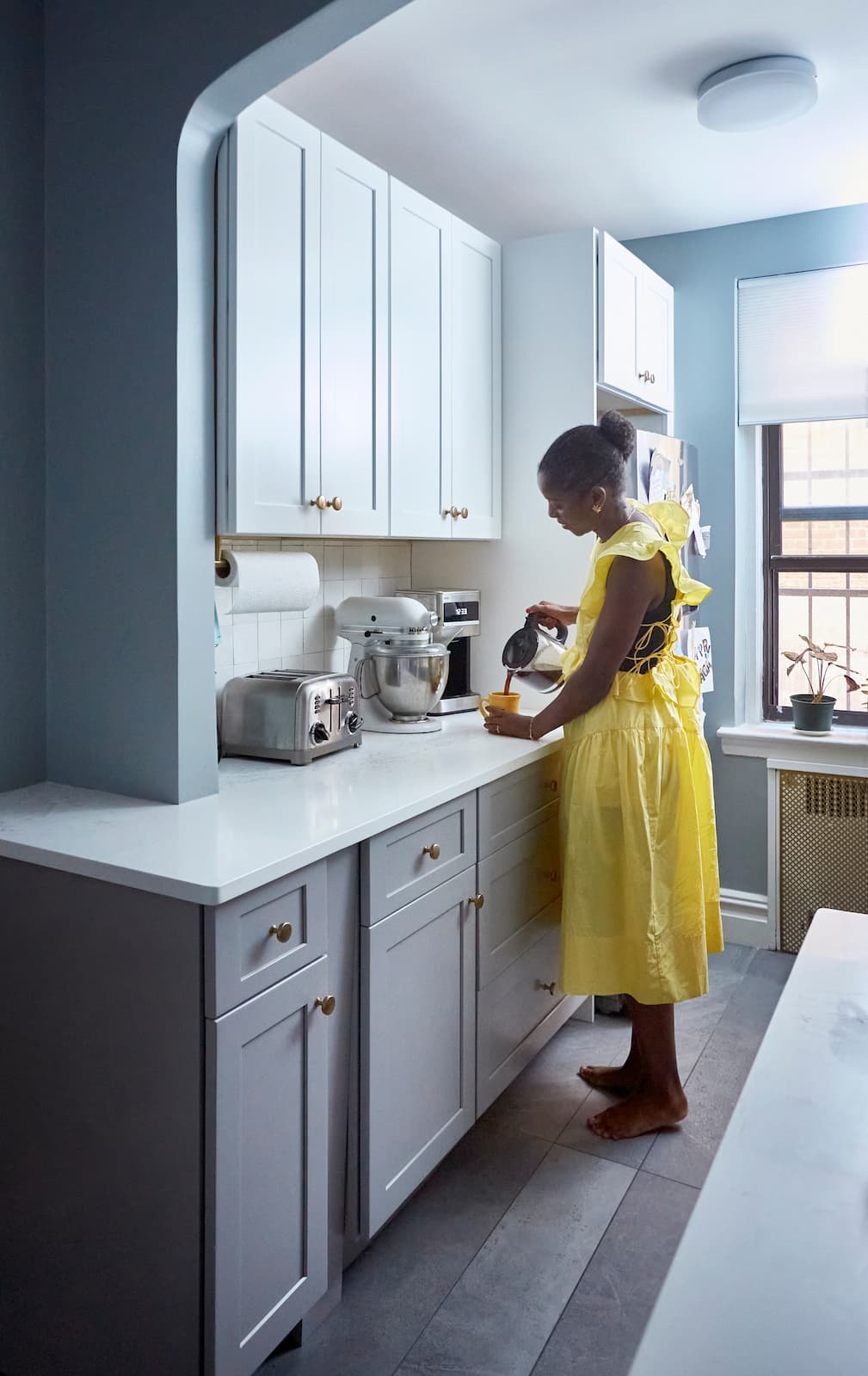
Renovate confidently with Block
Easily compare quotes from top quality contractors, and get peace of mind with warranty & price protections.
Thousands of homeowners have renovated with Block

4.5 Stars (100+)

4.7 Stars (100+)

4.5 Stars (75+)
In This Article

Planning & Logistics
How to Start Planning a Home Renovation
04.28.2025
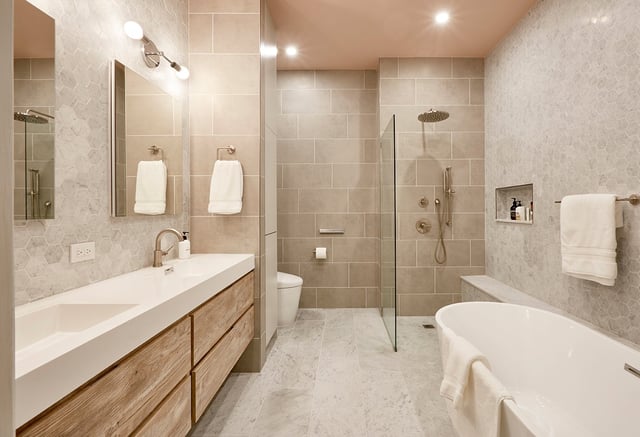
Process
How Long Does it Take to Remodel a Bathroom?
04.28.2025
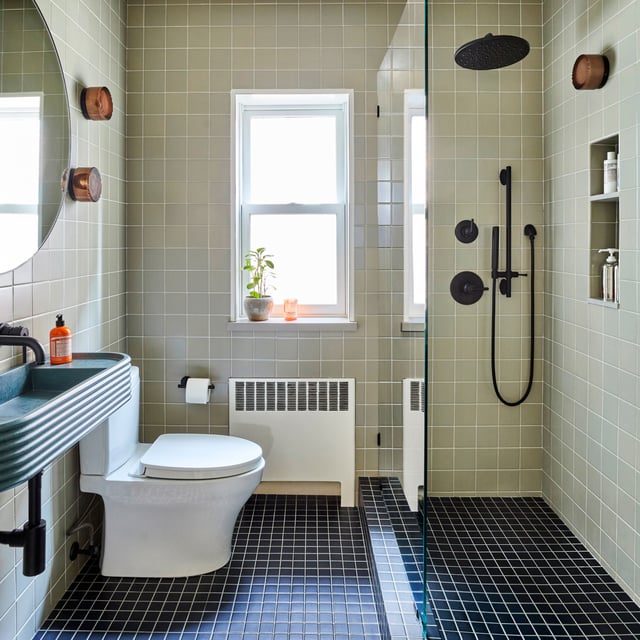
Cost
Jacuzzi Bath Remodel Costs: Pricing, Factors & Savings Tips
04.25.2025
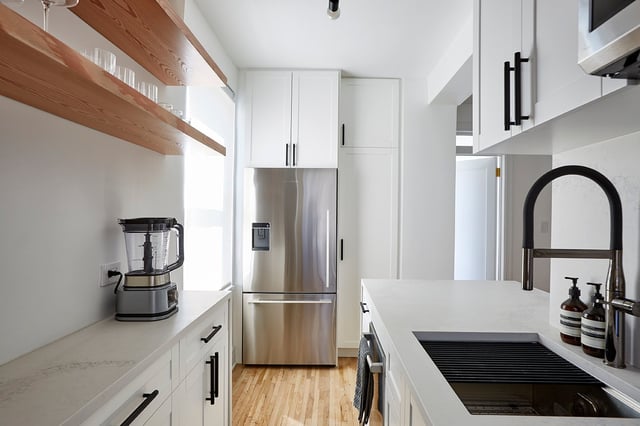
Remodeling
How to Plan a Kitchen Renovation Without Blowing Your Budget
04.25.2025
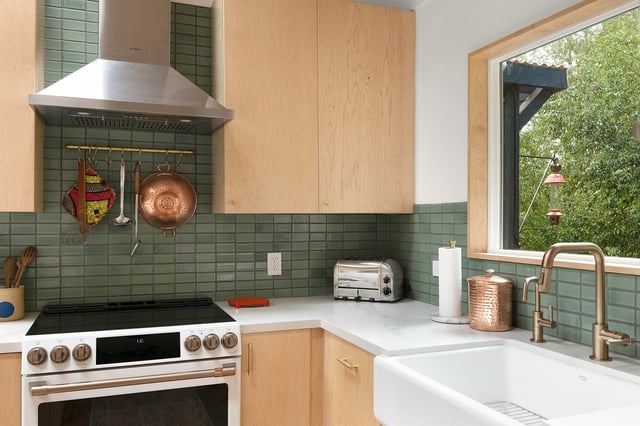
Remodeling
How to Plan Your Kitchen Remodel Step by Step
04.25.2025
Renovate confidently